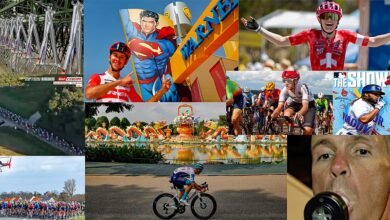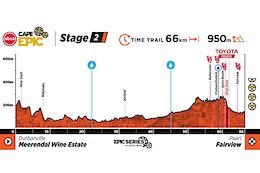Specialized S-Works Ares 2 Shoes Review: Incredible but There’s a Catch

Pros
Wide forefoot area
Metal BOA Li2 dials
Tough exterior
Locked-in feel
Vastly improved aesthetics
Cons
Price
Might require insoles
Difficult to adjust cleat position
Size Reviewed
44
Weight
283
Price
$600
Brand
Specialized
“], “filter”: { “nextExceptions”: “img, blockquote, div”, “nextContainsExceptions”: “img, blockquote, a.btn, a.o-button”} }”>
Today the second generation Specialized S-Works Ares 2 launches. It’s a range topping shoe with a wild claim of 7-watts saved but it’s also pricey. I’ve spent the last few months wearing a set of gorgeous white Ares 2 shoes and now it’s time to talk about it. I’ll say now they are some of the best shoes to land in our bike clothing reviews but there’s some unpacking we have to do. Dive in and we’ll talk about why I like them, what’s changed, and if they are worth it.
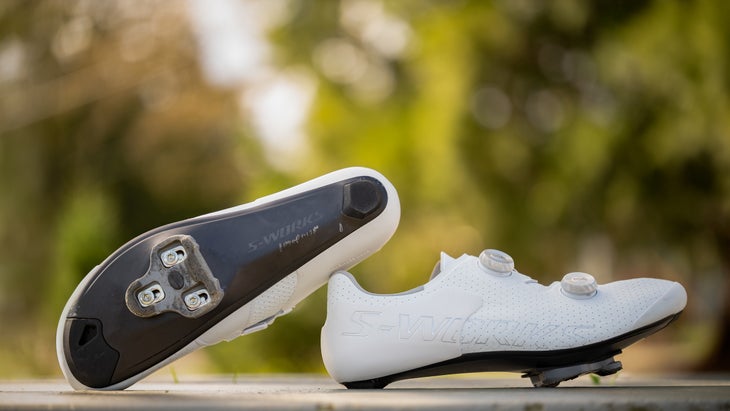
Quick hits: six things to know about the Specialized S-Works Ares 2
- Uses the same carbon outsole as the S-Works Torch including a wider forefoot and “pie crust” edging to reduce flex and eliminate resin build up
- The dials are still metal but unlike the Torch, these are BOA Li2 and they pop to release
- The entire exterior uses a synthetic leather that’s easy to clean
- The heel cup, toe, and inner forefoot all have reinforcement to strengthen and protect
- Replaceable heel tread with internally recessed screw
- “Titanium alloy cleat nuts can rotate to position pedal/cleats 5mm rearward” but it requires cutting through the interior
- The Ares is considered a sprinters shoe because it features a “triangular foot hold for increased lockdown” but it’s also an excellent design for anyone that prefers a “locked-in” fit that keeps your foot stable.
- Check the Specialized Website for more info and purchase

Specialized S-Works Ares 2 marketing speak
This section is designed as a way to share the technical details that a brand shares with me. That means this section of the article is specifically meant to include wild manufacturer claims.
I’m still having a hard time here.
One of the challenges is that the S-Works Torch hit the market in 2022 and ushered in a new era of Specialized shoe design. From the insole down, everything about the Ares 2 is the same as the Torch.
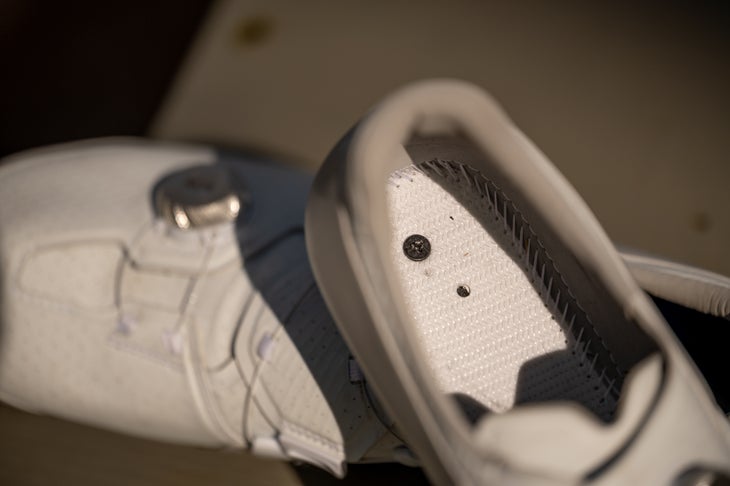
One part of that is the actual shape of the last. Specialized refers to this as the “Body Geometry Last” and it’s wider at the forefoot. This is a trend we are seeing across the industry but Specialized comes to it through the power of the brand size and expertise.
What I mean is that Specialized has huge retail reach and, by extension, the brand’s RETÜL fit system dwarfs the competition. A huge presence means high usage and that means lots of data. It doesn’t hurt that there’s also a dedicated team of 7 people with over 40 years of employment at Specialized putting that data to use.
The way that all comes together is that the team used the data from “from over 100,000 RETÜL 3D foot scans” to understand “that the shape of traditional cycling shoes doesn’t support the foot’s natural shape.” What isn’t specifically stated is that the team was also able to come up with a new last that’s 4mm wider (7mm in the wide option) in the forefoot and paired with a ”1.5mm built-in Varus Wedge.”
That new last is then tested and, again, Specialized is able to take advantage of scale. The brand has a lot of pro riders doing lots of testing and it adds up to “over 2,000 hours of rigorous ride testing” and, apparently, proof that the new last is better. For this launch it also seems that data has been remixed to say it “reduces forefoot pressure by 44%” compared to the previous design.
Then Specialized got better at manufacturing the new design. The new base has a “pie crust” edge shape. Which is really just a crease near the edge of the carbon that allows Specialized to better squeeze out excess resin plus an “internal I-Beam” design that keeps the stiffness. It all adds up to the typical lighter and stiffer.
So far all that info is fine even if slightly confusing since it’s not really new to the Ares 2. The brand created it for the Torch and it’s now come to the new shoe. Still, the Torch was a welcome update and it’s good to see it again.
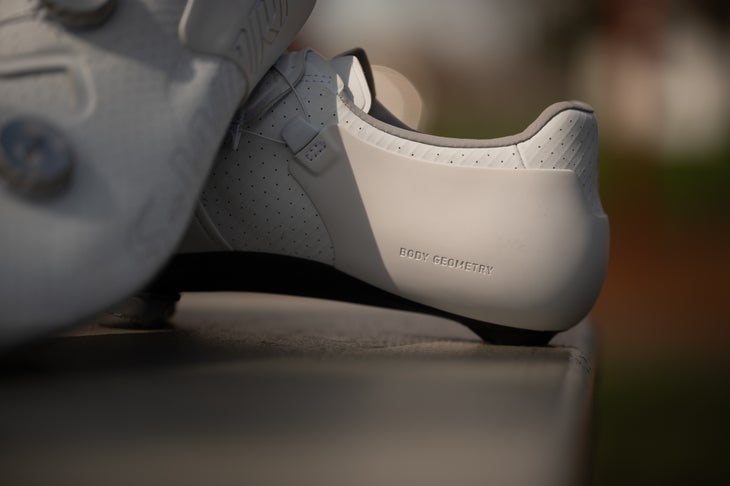
The part that’s a little hard to take seriously is the claim of “+7 watts improved lactate threshold.” It doesn’t help that Specialized only shares that it’s “due to Body Geometry innovation” which “includes custom footbeds, cleat position, and footbeds.”
Your guess is as good as mine as what that actually means or how the team landed on that number. There’s a 3D printed shoe company that also made claims like that and they’ve backed off a bit. In this case, I’d be inclined to believe that perhaps some combination of something makes that true but maybe take it with a grain of salt. It’ll make for good headlines but I wouldn’t expect it as you walk out of the store with your new “pumped up kicks.”
It actually doesn’t matter though.
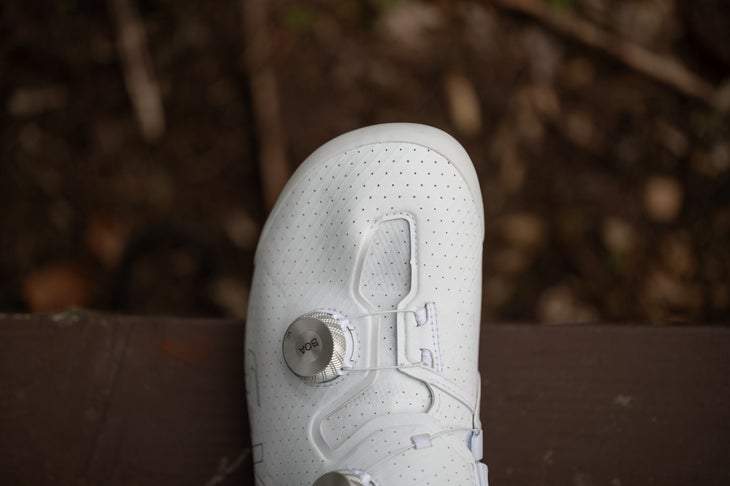
What’s actually happening with the Specialized S-Works Ares 2
If the “new” outsole and last isn’t new, and the 7 watts seems suspect, why is the Specialized S-Works Ares 2 different and why am I claiming it’s great?
The two are connected but first let’s talk about why it’s different from the Torch. Specialized calls this a sprinters shoe, and it differs from the Torch, because the upper is different. The Ares is designed to lock the foot down. No matter how hard you pull up on your foot it shouldn’t pull away from the footbed. It also shouldn’t separate from the footbed when you angle your foot. Then, by extension, the Ares should create a more efficient interface with the pedals given that your foot is always in contact with the insole.

The second part of that challenge is that the shoe has to remain comfortable. Your foot doesn’t move so hotspots could be an issue. Specialized solves this with a wide, Y-shaped, upper BOA pattern. There’s also a big wide strap to disperse that pressure across the top of your foot.
Then for the lower BOA the design actually reduces its effectiveness. There’s a larger cutout than on the Torch and it makes it impossible to crank down on the toe box. You get an envelope of support as the BOA pulls against the base but there’s no constriction. It’s helpful for WorldTour riders with bulging veins on the top of the foot but it’s also helpful to you.
The rear is different also. The Torch uses an asymmetric heel cup with more padding. The Ares 2 has a symmetrical cup and the padding is sparser plus denser. This heel cup expects you aren’t moving around and plans accordingly.
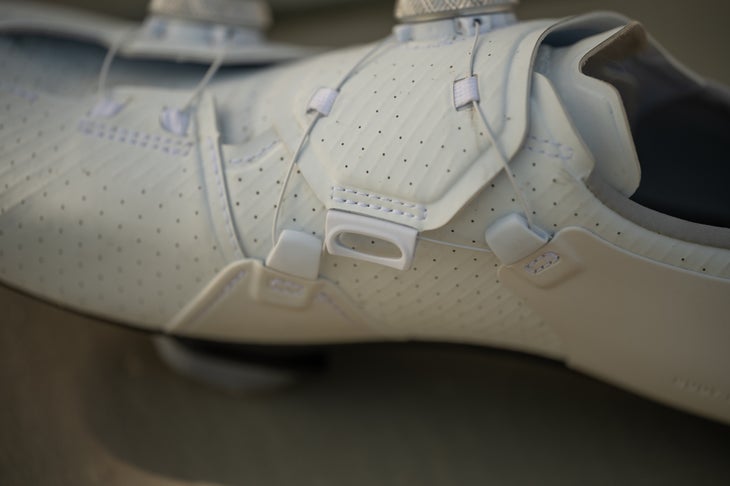
Specialized S-Works Ares 2 in use
Now we finally get to talk about why I love this shoe despite having “a sprint as power as a wet noodle.” (thanks friend) Sprint power aside though, I don’t care about this 7-watts claim and I don’t care if this is a sprinters shoe. That’s not why I’m such a fan.
The riding I do is long and relatively steady. I spend a whole lot of time during the winter training in sweet spot and I spend a great majority of my rides in Z2 or sweet spot. Obviously not sprint situations but I’ve found shoes with movement don’t work for me.
My feet have a tendency to move forward in shoes that have room for movement and that causes toenail bruising. Then there’s shoes that allow side to side movement and subsequent loss of feeling in my outside toes. I’ve also experienced situations where my shoes were narrow and so painful after 10+ hours I had to take them off and walk barefoot for 15-minutes.
The solution to all of this is a shoe that doesn’t allow for movement but there’s only a few out there and none of them are perfect. The Trek RSL Knit shoe is a fantastic option but it doesn’t hold up. Q36.5 Dottore Clima shoes hold up better but they still have a fabric outer as well. The older Nimbl Feat Ultimate were pretty amazing but they don’t actually feel that stable throughout the whole shoe. Then there’s S-Works Ares.
The previous version of this shoe was my go to if I could only grab one pair of shoes and it had to work. For example, when I headed to Italy to ride the Maratona dles Dolomites I needed something I could count on and the Ares was with me. It still wasn’t perfect though. The problem with the previous Ares was that they also suffered from some of the longevity issues of the Trek shoes and, more importantly, they were hideous.
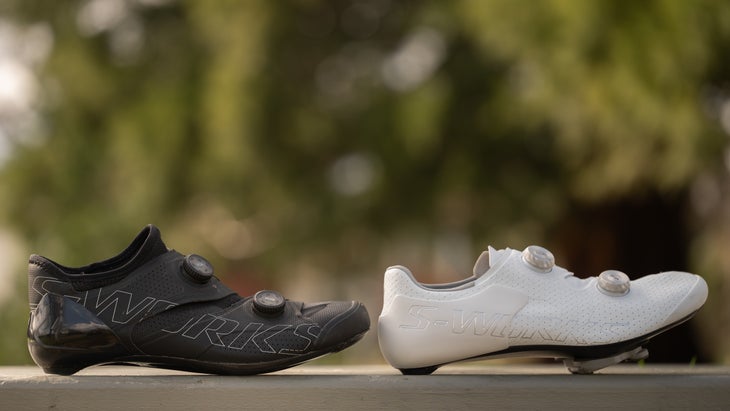
I don’t know if I’m supposed to admit that but I am. Great shoes to wear but they don’t look good and despite all the performance posturing, shoes are also a fashion product. Maybe you disagree with both of those points but I’m being honest here.
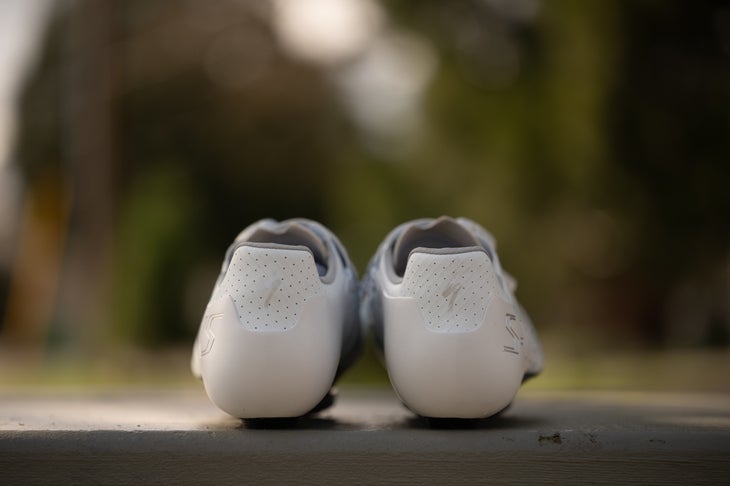
This all brings us back to the Specialized S-Works Ares 2. The new shoe takes what works about the old shoe and fixes the other issues. In terms of what works, that means the closure system changed but the end result is the same locked-in fit. Added to that is the new base that’s lighter, on paper anyway, with more room in the forefoot and a whole new upper.
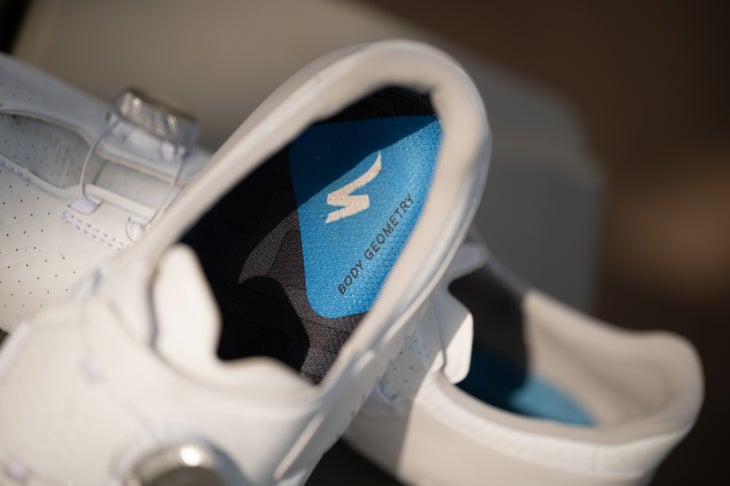
Everything about the new upper is better both functionally and aesthetically. Instead of the weird mix of sock and Dyneema, Specialised is using “proprietary materials and precise tooling” to accomplish that same mix of zero movement without hot spots. The advantage is that it looks better, at least to my eye, but also that it’s simple to wipe clean and it doesn’t absorb water. Specialized has always been good at protecting the toe from tire rub and that stays in this shoe plus there’s the hard heel cup that keeps your foot stable while protecting the shoe. There’s also a bit of that same hard plastic anchoring the upper BOA to the inside of the shoe which happens to be the spot you might touch your shoe to the crank.
All told, you get the performance of a knit/fabric shoe with the longevity of a faux leather shoe.
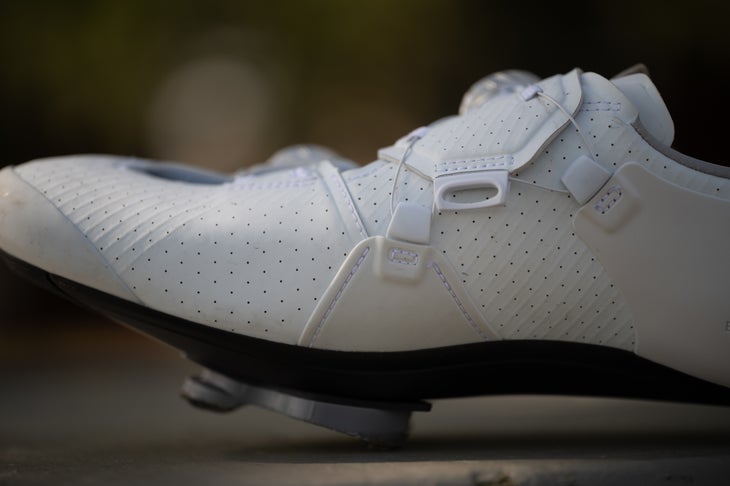
Conclusion
Hopefully I managed to communicate a bit of skepticism for claims that seem outlandish. I’ve seen brands claim a relationship between shoes and watts before but no one seems to be clearly explaining how to replicate it or exactly where it comes from. Same here.
There’s also a lot of info shared as part of this release that isn’t new. Specialized already changed the construction and shape of the base and last when the Torch launched years ago. The changes are positive so no complaints but it does muddy the waters of this latest release.
Despite all of that, I think it’s important to focus on the bottom line. These are the shoes I prefer to use and that’s not for lack of choice. I test shoes constantly and I have a giant pile of shoes that I rotate through to find the best. After the last few months of using the Specialized S-Works Ares 2, these are the ones I’m choosing to ride in.
I’ve used them on the trainer plenty, which is a great test of high-intensity performance, but they held up just as well through a 300-mile week testing bikes in California. One day I spent an hour climbing and never thought about my shoes. Another day I did a 6-hour century with no issues. Yet another day I found myself on the kind of 20-ish mile, zone 3 or 4-ish, route I’d likely do after work and, again, I loved the Ares 2. Technically speaking I can’t find a single fault.
Given the opportunity to make a change, the only thing I’d do is update the cleat position system. If you want to move the mounting holes all the way back you have to go in from the top, under the insole, and you need to cut through the material at the base of the upper. Specialised doesn’t think you should need to move cleat holes so it’s not easy to do. At least it’s possible I guess.
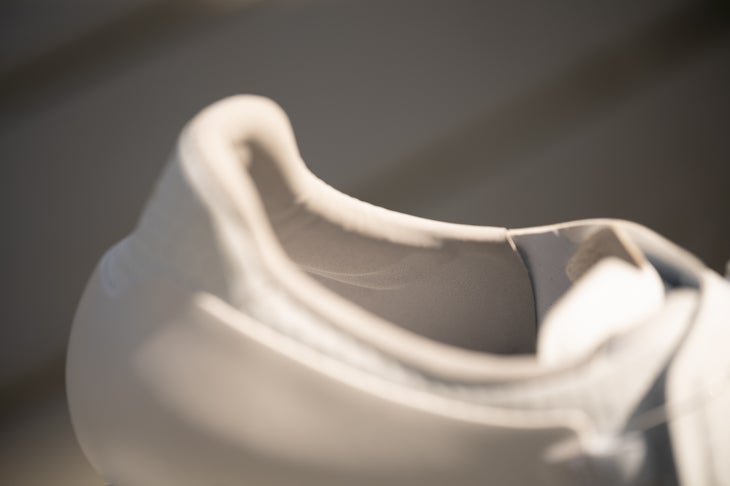
I should also mention that I needed insoles to make these work. That’s unique to me, and the blue Specialized SL insoles are perfect, but if you try these and you have pain on the inner foot just behind the tongue, try an insole. There’s a pad there that I find agonizing unless I have better arch support.
There is one more thing though.
The Specialized S-Works Ares 2 is much more expensive than previous S-Works shoes. Before this, the market had settled into a top price of $425-$450 for the best of the best from large brands. Small companies like Nimbl were more expensive but given economies of scale that made sense. Now that barrier is a distant memory.
The latest Specialized S-Works Ares 2 is an incredibly good shoe. It looks good, it should hold up over time, and there’s a foundation of solid research behind it. If you like feeling locked into your shoes, there’s nothing better. Unfortunately that is going to cost you $600.
Given the state of the market the price makes sense but it’s still rough. It’s also especially odd given the similarities to the Torch which is now a, relative, bargain. Ultimately you’ll have to make the call yourself if that makes sense to you or if it’s even feasible. The upside is that if you do take the plunge you get a quality shoe that I’d call the best at what it does.
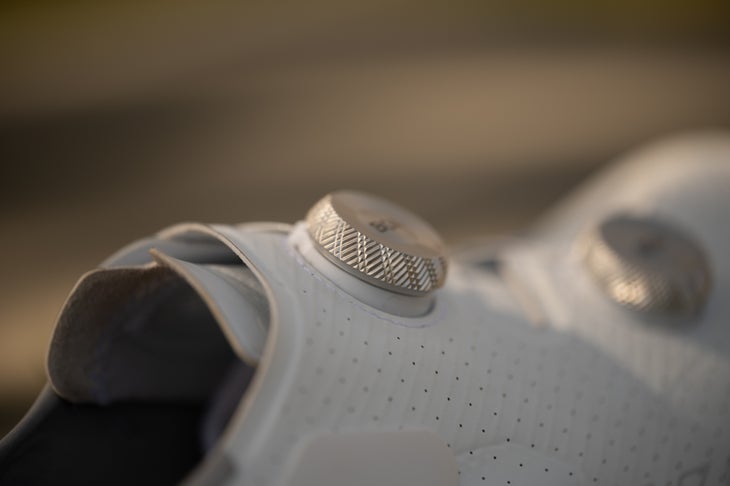
One more thought about price
My colleague Alvin Holbrook and I chatted after I finished this article and it seemed worth adding a little more on this subject. Specialized is breaking a norm here so commentary on price makes sense.
Specialized claims the price of these shoes is driven by advanced materials and R&D and that might make sense. The base is truly innovative and the upper materials are better than the Dyneema from older shoes. That said, much of that research was already completed when the Torch launched years ago. Still, the upper of this shoe is different and it is likely that some serious R&D made that work.

As to the question of worth, that’s up to you. You will not be faster because of these and there are much cheaper shoes that will do the job just fine. That’s always true though. Do you need Dura Ace when 105 is so good?
All I can tell you is that from a design and engineering standpoint, this shoe is successful. You’ll have to decide if that makes it worth the price of admission.

